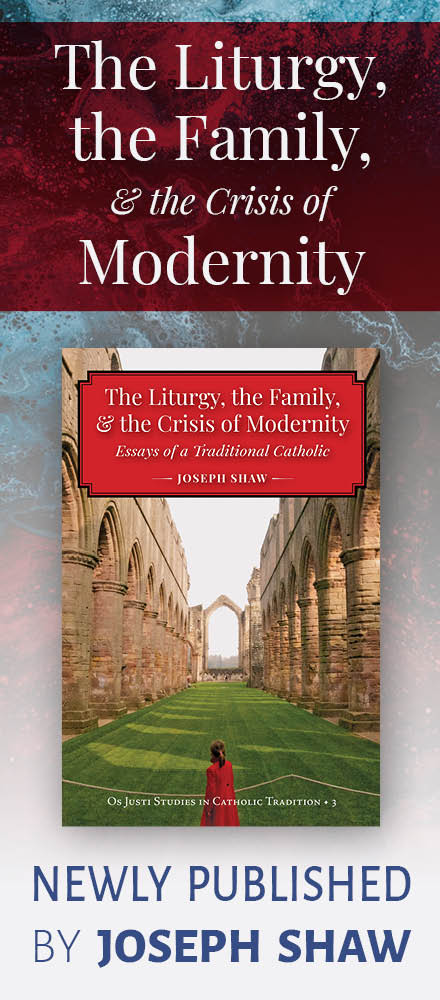After the very brief note from the Pontifical Commission Ecclesia Dei about the return of the German Trappist abbey of Mariawald to the Liturgy and the Observance in use in the Trappist Order until 1963/64 (cf. NLM report here), Mariawald Abbey itself has now issued a press release. This declaration, which is nothing less than a manifesto for a return to monastic tradition, I happily present to you here in an NLM translation:
The Holy Father Pope Benedict XVI has granted to the abbot of the Trappist abbey Mariawald (diocese of Aachen), Dom Josef Vollberg OCSO, according to his petition, the privilege to return with his abbey to the liturgy and observance in the Ancient Use of the Order which was in force up to the reforms in the wake of the Second Vatican Council.This so-called "use of Monte Cistello" was approved during the time of the Council in the years 1963/1964 as a preliminary step of reform.
In a letter of the Pontifical Commission "Ecclesia Dei" of 21 November 2008 this papal privilege is granted to the Abbey. In it, reference is made to the personal decision of the Holy Father to accede in all respects to the privileges desired by the Trappist for a full return to the Ancient Use in liturgy and monastic life. This includes the return to the ancient liturgical tradition of the Order in the celebration of Mass and Divine Office as it was binding until the liturgical reform of the Second Vatican Council.
The project of reform in Mariawald and the petition of the Abbot concerning this can be regarded as a fruit of the efforts of Pope Benedict XVI for the renewal of the Church in the spirit of tradition.
As the various postconciliar reforms have not yielded for the monastery the expected flowering in liturgy and in the life of the Convent, now the return to tradition links to the centuries-old tradition of the Order. Through the return to the ancient Gregorian liturgy and the stricter use of the monastic form of life, Dom Josef promises himself new spiritual impulses, also regarding new vocations for the abbey.
Worldwide, it can be felt that monastic communities, which cultivate the preconciliar Latin liturgy, can boast of significant numbers of vocations. Especially in France, on the background of a traditional interpretation of the rule of St Benedict and the Gregorian liturgy in Mass and Divine Office, there are flourishing abbeys. In Germany it has previously not been possible for vocations to the monastic life of a traditional form to join a corresponding community. With the papal privilege in Germany, too, there is now for the first time the possibility for young men to live the ancient tradition of contemplative life in the august forms of the classical liturgy and in the strict observance of the rule of St Benedict.
Dom Josef sees himself confirmed in his decision by the Holy Father, whose generously formulated privilege of all desired forms of return to tradition also bespeaks his personal desire that in the rediscovery of the ancient liturgy and manner of life, a renewal of monastic life as a whole may be stimulated. Thus, the abbot is convinced, the personal and direct action of the Pope for the Mariawald Abbey corresponds to the "Project of Tradition", which the Holy Father has initiated in 2007 by his Motu proprio "Summorum Pontificum" for the liturgy.
Dom Josef finds himself and his abbey sustainably motivated by the Holy Father and his immediate and direct papal juridical act, to implement the tradition-oriented reform of the monastery with new spiritual vigour for the sake of its future. The Abbey assumes in this a pioneering role worldwide to renew the monastic life out of the spirit of tradition and to counteract the decline of monastic life, which especially some Trappist abbeys have had to experience in recent years.
In the field of economics, the monastery has in recent years already put an emphasis on its focus on organic agriculture. Now it is the spiritual content of contemplative life ehich is to receive new stimuli from the great tradition of the Order and its classical Latin liturgy.
Currently in Mariawald there are living ten monks, a novice and an oblate. The history of the abbey began with the founding of a Cistercian priory in the 15th Century. After an interruption of monastic life of more than sixty years through the turmoil of the French Revolution, the monastery, newly populated in the 19th Century by Trappists from Alsace, was raised to abbey on the Feast of St Michael in 1909.
On the background of this historic date, now the implementation of the full return of the abbey to the old tradition of contemplative life and to classical Gregorian liturgy is to be completed on the Centenary on 29 September 2009.
Marienwald, the 25th of November, 2008
Dom Josef Vollberg, O.C.S.O., abbot
May this be indeed be the beginning of a renewal of monastic life out of the spirit of tradition. Omnes sancti Monachi et Eremitæ, orate pro nobis!




















